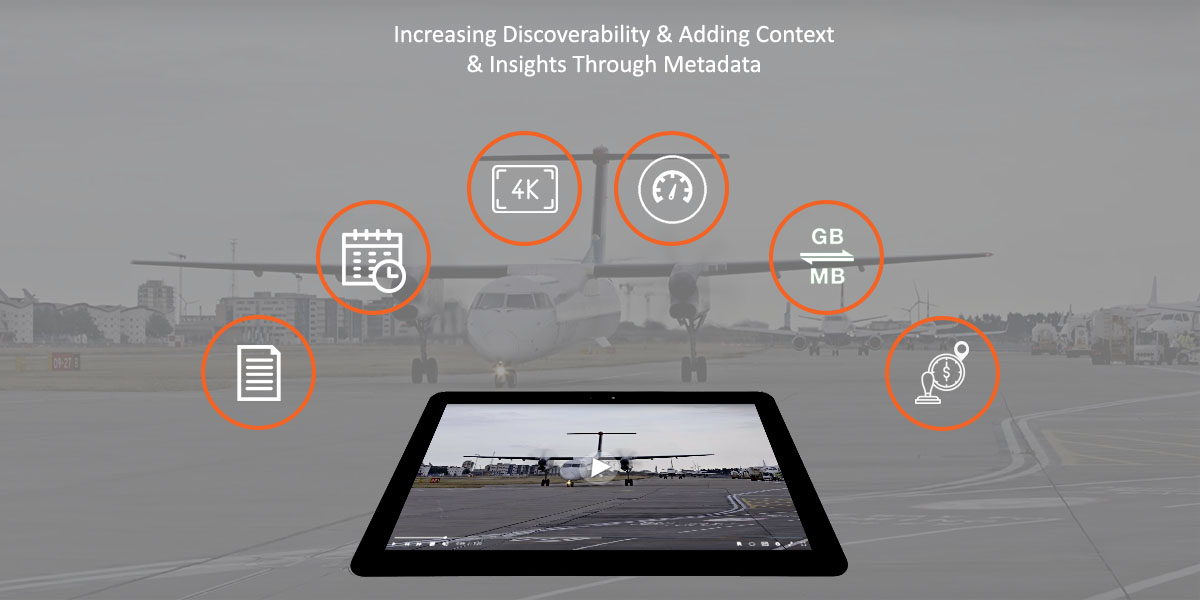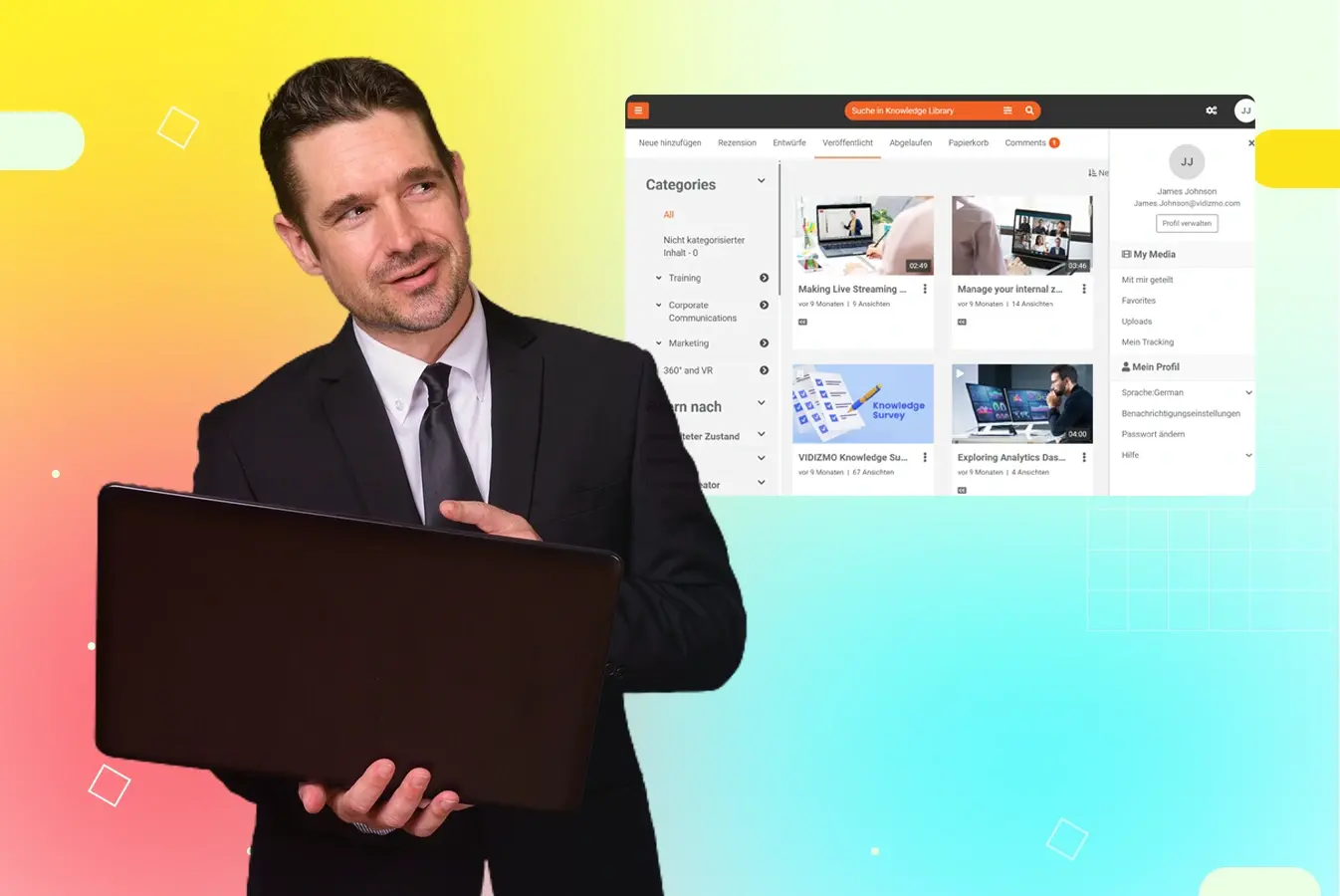Getting Insights with Metadata in VIDIZMO
by VIDIZMO Team, Last updated: June 20, 2025, Code:

Metadata, which is data about data, for it to be optimized for videos for searching, recording, and managing, it is generated in either descriptive or structural form.
Descriptive metadata provides information about the intellectual content of a video, and it changes with each video file, whereas structural metadata shows how different video files are related to each other, and it applies to multiple files. In a video, metadata is mostly used to describe information related to the video asset.
This can be user-generated, such as tags and video descriptions, or generated by the system from within videos, such as video size, width, and height, and data against the timeline, such as transcription and geolocation.
Metadata generated by VIDIZMO is optimized for searching, recording, and managing. VIDIZMO provides its users with over 600 such systems created and limitless user-generated descriptive and structural metadata.
These are the following ways VIDIZMO generates metadata:
- System Generated
- Extracted from the data in the video
- Derived from data against a timeline
- User Generated
- Text
- Date
- Drop Down
VIDIZMO’s Powerful System Generated Metadata
Metadata Extracted From Within a Video File
Metadata generated within a video file is used to describe video data that comes from cameras, video recorders, and video editing programs. There are specific data which is present in a video when the original file is uploaded, such as the size of a video file, height and width, Bitrate, Frame rate, and much more.
VIDIZMO extracts all of these insights as metadata, which is present in a video. Metadata such as this provides the user with insights such as the quality of a video, size, bandwidth required to view that video, and more.
In the surveillance industry, CCTV security camera video recording is usually done at 30 fps. However, there are surveillance providers who provide videos recorded at lower fps; the choppiness of a video is noticeable to the human eye if the fps (frames per second) of a video is lower than 15 fps.
Another disadvantage of lower fps is when an operator digitally plays back the video surveillance footage on any platform, they can capture and pause only a few specific frame rates in time with a lower frame rate.
VIDIZMO generates metadata such as frame rate, and so the operator, before even viewing the video file, would know details about the choppiness of a video and how much analysis he/she can perform on it.
Metadata Extracted Against The Timeline
Similarly, there is data present in a video file that is against the timeline of the video. These data are present in a video file and change according to the timeline. Examples of these data include information such as the time when a video is taken, the location where the video is shot, and more. VIDIZMO can extract all of these insights as metadata against the timeline.
For instance, in the insurance industry, drones are being used to investigate property claims in inaccessible locations, thereby speeding up the inspections while reducing the risk to claims adjusters.
VIDIZMO’s system-generated metadata would generate data such as GPS Speed, GPS Horizontal Positioning, and much more. Metadata such as this can be a quick way to add context and valuable information.
For example, the adjuster just by looking at the metadata such as GPS timestamp would know the precise time when the drone video was captured, see the location where the footage was taken by the drone from seeing metadata such as Latitude ref and Longitude ref.
VIDIZMO’s Limitless User-Generated Metadata
User-generated metadata in VIDIZMO is done by selecting one of the three supported “Type” actions, each with various options associated with it.
Capabilities include being able to include open-ended Type actions: Text, and option-related: Drop Down actions. This method aids in keeping metadata information up-to-date.
This process is also helpful in speeding up and simplifying future digital asset maintenance, but is also useful in searching video assets, especially when training workers using specific videos.
A good example would be in the aviation industry, where engineers are trained by video to design wire harnesses and wired box assemblies.
There are thousands of part numbers and three different types of parts to choose from when designing a wire harness, so by using VIDIZMO’s user-defined attributes, this allows uploaders to define which different components and types the video is training the viewer on.
The feature would then generate metadata with every video uploaded, which can be easily searched in VIDIZMO’s platform.
The viewer can search for the type of part or part number he/she want to view the video about in VIDIZMO’s search bar. However, in this case, the viewer is unaware of the type of part and part number; VIDIZMO’s powerful faceted search can even be used here.
Using VIDIZMO’s filters for part type and names, the viewer can search for specific and precise videos that are related to the subject he/she want to be trained on.
Make Your Video Data Smarter with VIDIZMO Metadata
Metadata is more than just technical information; it’s the foundation for intelligent video management.
With VIDIZMO, organizations gain access to hundreds of system-generated and customizable user-generated metadata fields, enabling powerful video search, content discovery, and workflow automation.
Whether you're managing training content, insurance claims, or surveillance footage, VIDIZMO’s metadata capabilities bring unmatched clarity, organization, and accessibility to your video assets.
By leveraging descriptive and structural metadata, both automatically and manually generated, you turn raw footage into actionable insights.
To know more about VIDIZMO’s metadata generation, contact us today or visit our website for details.
People Also Ask
What is metadata in a video management platform like VIDIZMO?
Metadata in VIDIZMO refers to descriptive or structural information about video content, such as tags, timestamps, file dimensions, GPS data, and custom user-defined fields. It helps improve searchability, classification, and management of digital assets.
How does VIDIZMO generate video metadata?
VIDIZMO generates metadata in two ways:
- System-generated metadata is extracted automatically from video files (e.g., frame rate, resolution, GPS, transcription timelines).
- User-generated metadata allows users to add custom fields like tags, dropdown options, or dates to describe content in more detail.
What are some examples of system-generated metadata in VIDIZMO?
Examples include video resolution, file size, frame rate, bitrate, GPS location, and transcription data tied to specific timestamps. These insights help users assess video quality, playback characteristics, and contextual data.
Why is user-generated metadata important in video management?
User-generated metadata allows teams to create searchable and categorized video libraries by adding context-specific information. This is especially useful in industries like aviation, legal, or healthcare, where content needs to be indexed for training, compliance, or documentation.
Can metadata improve video search in VIDIZMO?
Absolutely. Metadata powers VIDIZMO’s faceted search capabilities, allowing users to filter videos by tags, custom fields, part numbers, topics, or any metadata associated with the content, making video discovery fast and efficient.
How does timeline-based metadata work in VIDIZMO?
Timeline-based metadata refers to data that changes across a video’s duration, such as timestamps, GPS coordinates, or transcription. It enables precise navigation and analysis of video content at specific moments.
What is the difference between descriptive and structural metadata?
- Descriptive metadata describes the content of a single video (e.g., tags, transcript, creator).
- Structural metadata shows how video files relate to each other (e.g., grouped episodes, related content) and applies across multiple files.
Does VIDIZMO metadata support compliance use cases?
Yes. Metadata helps support compliance by documenting video attributes like who accessed the video, when it was created, its GPS location, and transcription logs—critical for legal, regulatory, and operational audits.
Can VIDIZMO metadata be customized?
Yes, users can define and apply custom metadata fields like drop-down menus, text boxes, and date fields, tailored to their specific use cases. This makes content indexing and management highly flexible.
Jump to
You May Also Like
These Related Stories

VIDIZMO Enterprise Video Platform | Alternative to IBM Cloud Video

Empowering The Digital Insurer With VIDIZMO



No Comments Yet
Let us know what you think